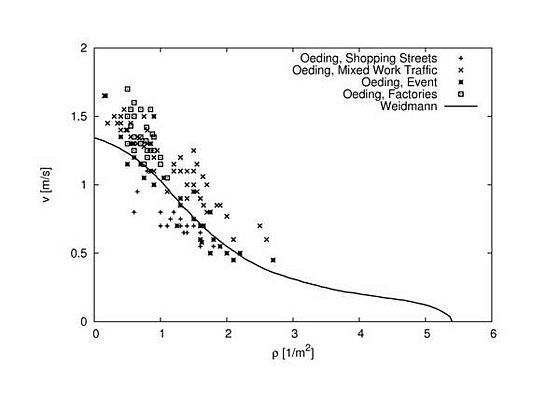Setup
Flow direction: Uni- and bidirectional
Boundary condition: Open
Places of research: Public footpaths
- Shopping Streets: Foottraffic in inner city shopping streets were measured. This traffic moved equally in both directions. There were bigger proportions of older people (mainly women) and children in the pedestrian groups.
- Mixed Work Traffic: Mainly on workdays in the morning (6 to 8 o´clock) passenger flows were recorded, that consisted of workers of different companies. They moved on footpaths of inner city mainroads, mainly in one direction.
- Event Traffic: Most of the data was obtained with pedestrians moving to and from a sports stadium.
- Footpaths close to Factory Entrances: The group of pedestrians consisted of workers moving to and coming from big factories. Thus they were were trained with equal aim/source (unidirectional).
Data collection: Photographs and shots were taken from an elevated position with different types of equipment (photo and film cameras)
Fundamental Diagram
Data
The data can be found here.
References
D. Oeding
Verkehrsbelastung und Dimensionierung von Gehwegen und anderen Anlagen des Fußgängerverkehrs
Straßenbau und Straßenverkehrstechnik, Heft 22, 1963

